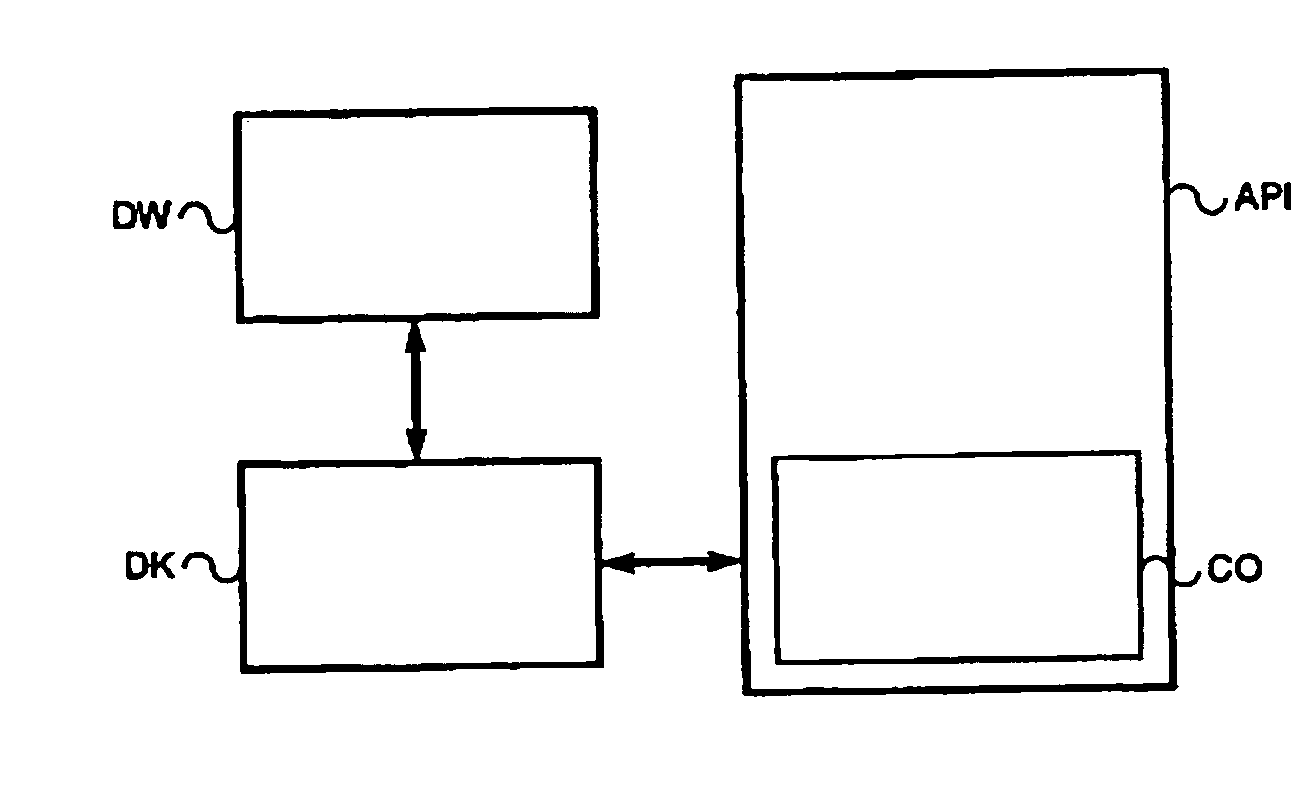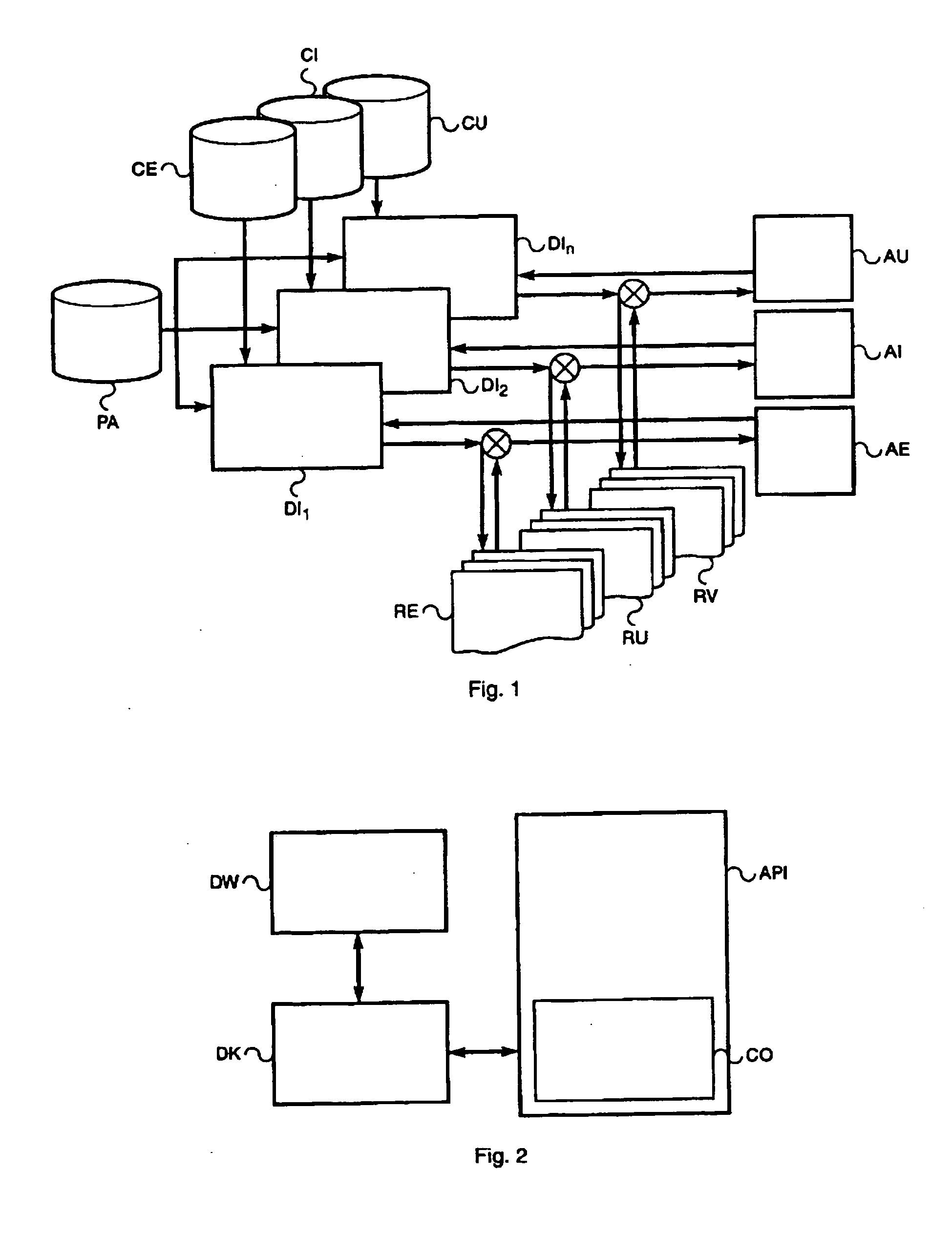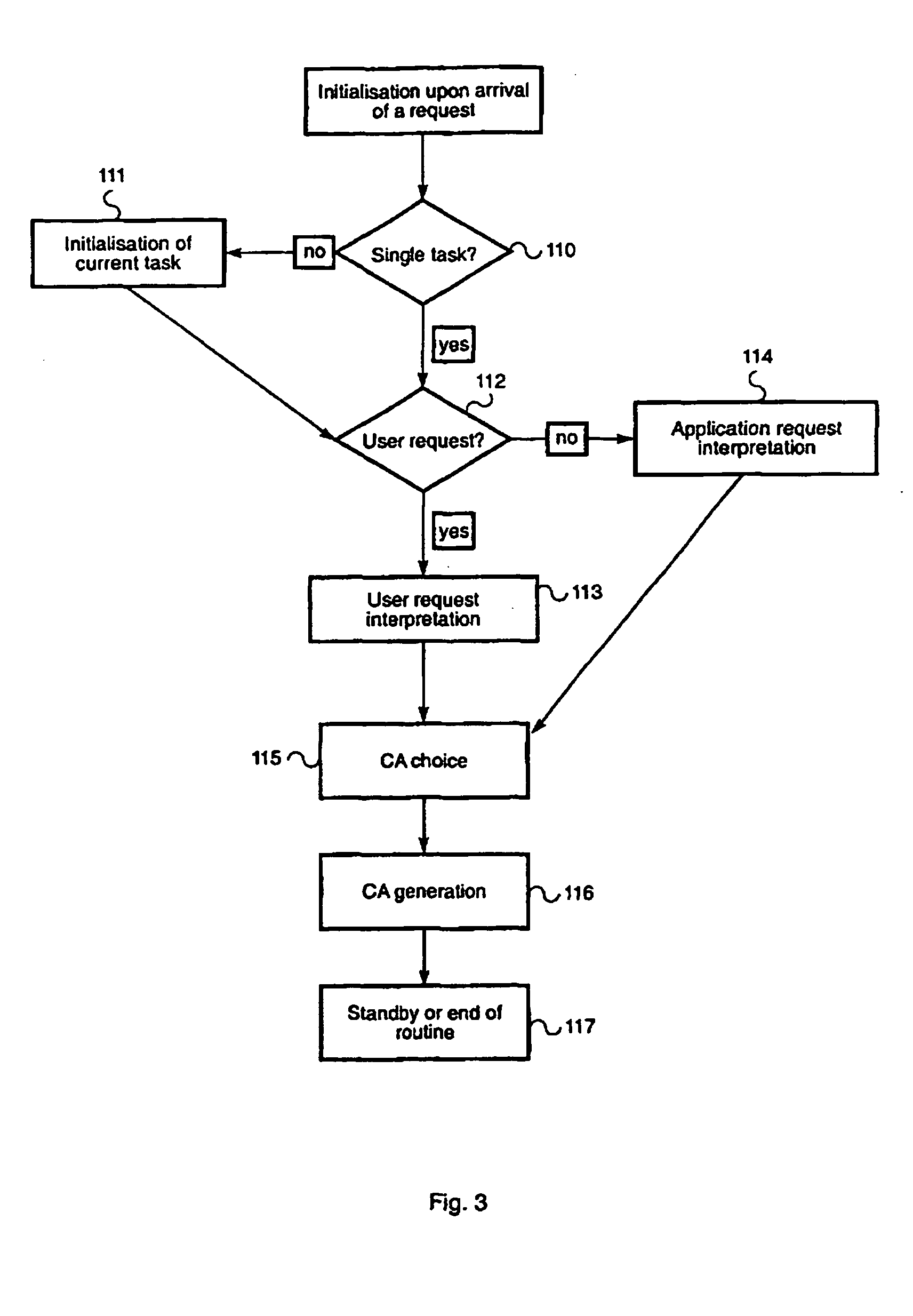Method for managing mixed initiative human-machine dialogues based on interactive speech
a human-machine dialogue and mixed initiative technology, applied in the field of automatic communication systems, can solve the problems of difficult to envisage the description of the various linguistic utterances, the type of interaction is not very natural, and the user's dislike of the system, so as to improve the naturalness of the interaction
- Summary
- Abstract
- Description
- Claims
- Application Information
AI Technical Summary
Benefits of technology
Problems solved by technology
Method used
Image
Examples
Embodiment Construction
In the text that follows, the term “exchange” will refer to the segment of time in which the user utters the values of the parameters forming the request to the system (user's exchange) and in which the system asks for confirmation of the correctness of acquired values or reads the information retrieved in an external database (system exchange).
The dialogue model of the invention realises a dialogue situation between a user and a machine in which the user provides the domain-specific information elements which form the user's request to the machine and in which the machine uses such elements to satisfy the user's request managing information exchange, confirmation requests and ambiguity solution strategies in general terms. In the method described to this point, the information elements provided by the user are modelled in terms of parameters while the system's exchanges are expressed by communicative acts, or CA in short, which are described in the following table with the respe...
PUM
 Login to View More
Login to View More Abstract
Description
Claims
Application Information
 Login to View More
Login to View More - R&D
- Intellectual Property
- Life Sciences
- Materials
- Tech Scout
- Unparalleled Data Quality
- Higher Quality Content
- 60% Fewer Hallucinations
Browse by: Latest US Patents, China's latest patents, Technical Efficacy Thesaurus, Application Domain, Technology Topic, Popular Technical Reports.
© 2025 PatSnap. All rights reserved.Legal|Privacy policy|Modern Slavery Act Transparency Statement|Sitemap|About US| Contact US: help@patsnap.com



